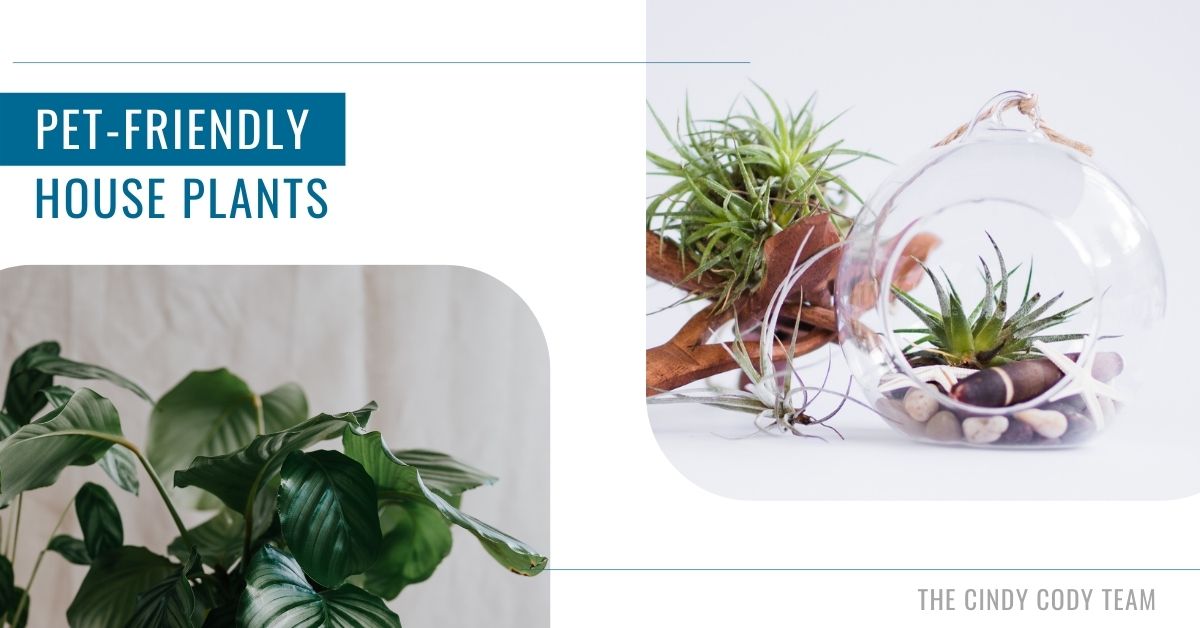House plants can bring so much life into your home. They’re lovely to look at and can be great home decor accents. But if you have pets at home, it’s important that you know what you’re bringing into your house. Some plants can be toxic for dogs and cats.
Better Homes & Gardens put together this list of 15 Pet-Friendly Houseplants That Add Life Without the Worry. For a more detailed look at each plant, read the article.
1. African Violet
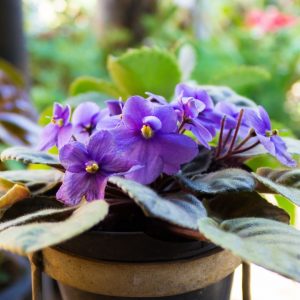
“Want houseplants that are pet-friendly that also produce gorgeous blooms? Look no further than African violet. It comes in a range of purple and pink hues, is low maintenance, and thrives without bright light. Keep the soil moderately moist, and water African violets by letting them soak up water through the pot’s drainage hole to avoid damaging the leaves and petals. This flowering houseplant can brighten up even the smallest spaces because it stays less than 12 inches tall.”
2. Air Plant

“Tillandsia varieties make excellent pet-friendly, low-maintenance houseplants because they don’t need any soil to grow. Most air plants will stay smaller than 12 inches, and they thrive in bright, indirect light with a quick soak in water about once a week. However, cats and dogs alike will find their spindly, grass-like leaves tempting to chew on so make sure you keep them out of reach.”
3. Aluminum Pant or Watermelon Plant
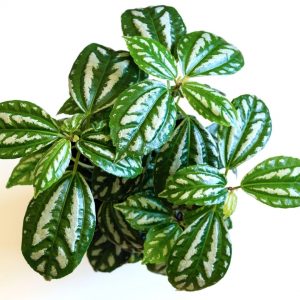
“The variegated gray-and-green leaves of aluminum plant (part of the genus Pilea) make it an attractive, pet-safe houseplant. It stays shorter than 12 inches, grows well in medium to low light, and only needs water when the top inch of soil is dry. Since it tolerates low light, you can grow it almost anywhere that’s out of reach of your furry friends.”
4. Christmas Cactus
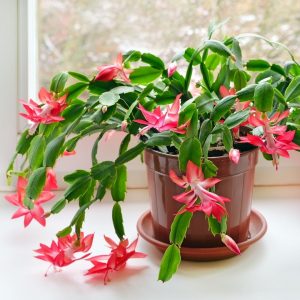
“Unlike its dangerous holiday counterpart amaryllis, Christmas cacti are non-toxic plants to have around curious cats and dogs. You still shouldn’t let your pets chew on it (Christmas cacti can cause intestinal discomfort if eaten) but overall it’s a safer choice than many other festive plants. Christmas cacti can easily be confused with Thanksgiving cacti, but both are safe for pets and have similar care requirements. Both cacti stay relatively short (under 12 inches), but can spread up to two feet, and grow best with regular waterings and bright, indirect light.”
5. Some Varieties of Ferns
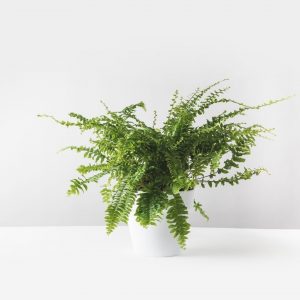
“Identifying ferns can be a bit tricky, as there are several plants with the word “fern” in their name that are not actually part of the fern family. True ferns such as Boston and maidenhair are fair game as indoor plants safe for pets. Just beware of toxic misnomers like asparagus fern, which is actually part of the lily family. Though their size can vary, most ferns have similar needs: They like indirect light, evenly moist soil, and high humidity.”
6. Friendship Plant
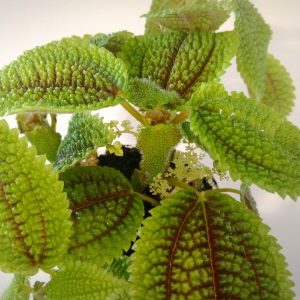
“The friendship plant (which is closely related to aluminum plant) is named for the ease with which it can be divided and shared. If you get one as a gift, rest assured it’s safe for your cats and dogs, even if they take a bite out of this plant’s fuzzy, crinkly leaves. Friendship plant tolerates medium and low light, loves humidity (it grows well in terrariums), and usually doesn’t grow taller than 12 inches.”
7. Some Herbs
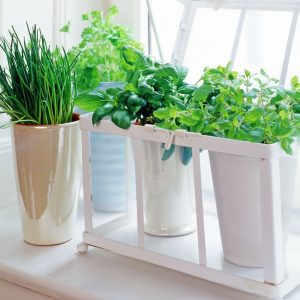
“Indoor herb gardens are an easy way to add fresh flavor to your home cooked meals. But not all herbs are created equal when it comes to pet safety. Standards like lavender and oregano are off-limits, but basil, sage, and thyme are all houseplants that are pet-friendly. Place herbs in a sunny window that gets at least four or five hours of direct sunlight every day, and water when the top inch of soil is dry.”
8. Lace Flower Vine or Chocolate Solider

“Pretty lace flower vine is an easy, pet-friendly houseplant that grows best in hanging baskets, well out of reach of your cat or dog. But should an extra-persistent pet make their way into the pot, no harm will be done. Hang this pretty plant in a spot with bright, indirect light, and water whenever the soil starts to feel dry, and its trailing stems will grow to about three feet long.”
9. Lipstick Plant
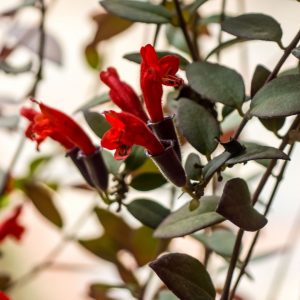
“This quirky plant has blooms that look like tubes of lipstick, and is safe for cats and dogs alike (other members of the Peperomia family are, too). A native of the tropics, lipstick plant thrives in bright light and loves being outside in the warmer months. It can grow up to 20 inches tall and likes to have consistently moist soil, so don’t forget to water!”
10. Parlor Palm
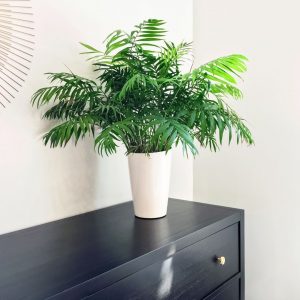
“Pet owners looking to add a small tree indoors may want to pick up a parlor palm. This pet-friendly, low-maintenance houseplant is also a good starting point for beginners. It grows best in bright, indirect light, but also tolerates low light. Water when the top inch of soil is dry, and your parlor palm could reach up to eight feet (though four feet is more common).”
11. Moth Orchid
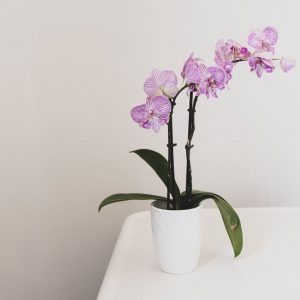
“The common moth orchid (the one you’re most likely to see in the floral shop) isn’t harmful to pets. But one thing to watch for: Dogs and cats who love to chew may get into trouble in the potting mix, which often is made up of bark chips. The chips aren’t toxic but may cause tummy troubles if swallowed. Usually between one and three feet tall, this pet-friendly houseplant can tolerate low, medium, or bright light, and generally needs water once a week, or every other week.”
12. Polka Dot Plant

“Use polka dot plant to add a splash of pattern and color to miniature gardens, terrariums, mixed containers, and more. You can find this pet-friendly plant in colors like pink or white, and though it can grow up to three feet tall, it usually stays on the small side (under 12 inches) in containers. Place it in a spot that gets bright, indirect light and keep the soil consistently moist.”
13. Prayer Plant or Calathea
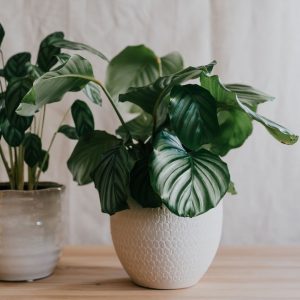
“Topping out at six to eight inches, prayer plant is ideal for small spaces like bookshelves and end tables. Its red, cream, and green leaves curl up at night, giving it its name. What’s more, it’s one of the easiest houseplants you can grow that’s also safe for pets. It grows best in medium or low light, and you can let soil dry out a bit between waterings.”
14. Spider Plant
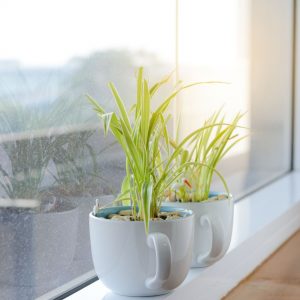
“This pet-friendly houseplant is one of the easiest you can grow. It’s also super simple to grow more spider plants from the babies that the mother plant produces. Spider plant grows best in bright, indirect light, but it can tolerate low light, too. Let the soil dry between waterings, and your plant can grow up to 12 inches tall and 24 inches wide, and produce multiple baby plants.”
15. Some Succulents

“Many of the most popular succulents, including hens and chicks and echeverias, aren’t problematic, but with so many varieties on the market, it’s best to research each individual plant. Jade, for example, while similar to other succulents, is actually dangerous to pets. Most succulents stay just a few inches tall when grown indoors. They will do best in bright light, and only need watering every couple of weeks.”


